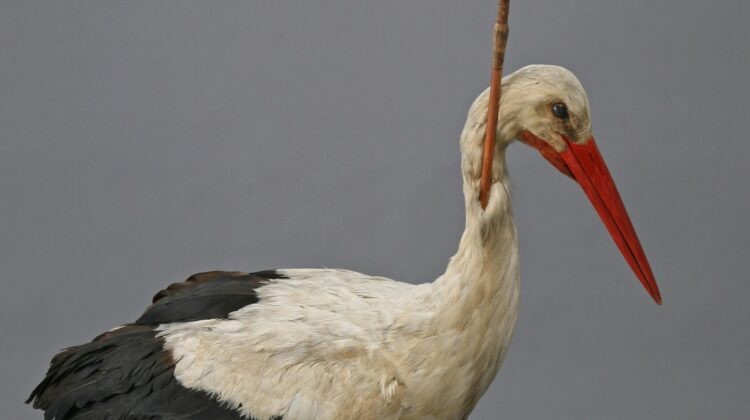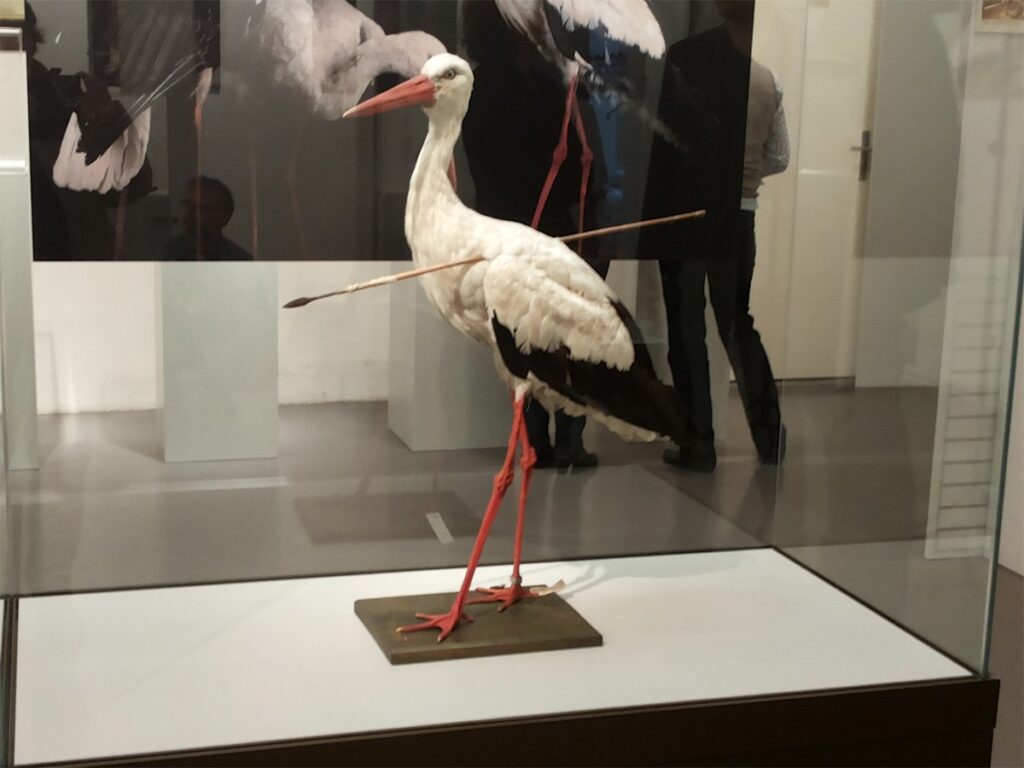
For centuries, the migration of birds was a puzzle to many. While people noticed that certain types of birds appeared and disappeared at certain times of the year, they could only guess at where they went. The philosopher Aristotle came up with the theory that migrating birds simply hibernated in the winter, either in nooks and crannies or under water, but it was not until 1822 that his theory was finally disproved.

A white stork, Ciconia Ciconia, was found outside the village of Klütz on the Baltic coast of what is now Germany. The stork was not an ordinary one, however, as it had a 30-inch spear running through it. The spear had entered by the left-hand side of the stork’s body and exited halfway up its neck on the right-hand side, impaling it in a grotesque fashion. The hunter who had shot the stork mourned the loss of his dinner and his prize spear, but he unknowingly provided proof that Aristotle’s theory was wrong.
The stork’s spear wound showed that it had not hibernated but had flown a considerable distance, proving that it had migrated instead. The wound also showed that the stork was able to withstand the challenges of migration, such as the changing weather and the physical exertion required for such a long journey.

The discovery of the wounded stork paved the way for further research into bird migration. Ornithologists began to study the habits of birds more closely, and they discovered that birds use a variety of navigational methods to find their way. Some birds navigate by using the sun, stars, and the earth’s magnetic field. Others use landmarks and memorize their route. Still, others follow the migration patterns of other birds, using them as guides.
Today, we know that bird migration is an incredible feat of endurance, and we have a much better understanding of how birds are able to navigate such long distances. Ornithologists use satellite tracking and other technology to study bird migration, and they continue to learn new things about the habits and behaviors of these fascinating creatures.

In conclusion, for thousands of years, people believed that migrating birds hibernated in the winter, but a wounded stork proved otherwise. Today, we know that bird migration is a complex and remarkable phenomenon, and we continue to learn more about it every day.

Leave a Reply